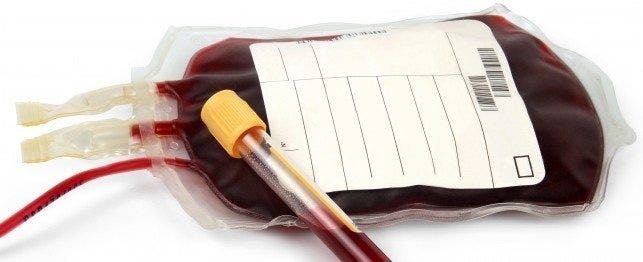
Blood Transfusion Procedure in Cats
Feline Blood TransfusionsBlood transfusions, a procedure in which blood from a donor individual is put into the circulatory system of a recipient, are rapidly becoming common in veterinary medicine. Several different types of blood products can be transfused. Generally the term “blood transfusion” refers to either whole blood or packed (concentrated) red blood cells (PBRCs). Other blood products such as plasma may also be given but this is generally referred to as a “plasma transfusion.” Each type of blood product is given to treat different problems.Prior to starting the transfusion, blood typing is performed on both the donor and the recipient cats. Performing a transfusion with individuals of the same blood type can help reduce the risk of negative side effects including transfusion reaction, in which the recipient cat’s body rejects the donated blood. Unfortunately, transfusing the same blood type does not guarantee that a reaction will not occur. For this reason, cross matching is often performed. This can help determine if the blood that the cat is receiving is compatible with his or her own blood. Cross matching is especially important in animals who have received previous transfusions as they are at a higher risk for transfusion reactions.
What Does a Blood Transfusion Reveal?
A blood transfusion is a treatment procedure and does not “reveal” anything. Transfusions with whole blood or PRBCs are most often given to pets that are anemic or losing blood. Anemia or blood loss can be caused by a variety of conditions including the ingestion of rat poison, immune mediated disease, cancer, or trauma such as being hit by a car. Blood transfusion is often used to support the pet while the underlying condition causing the blood loss or anemia is being evaluated or treated.
How Is a Blood Transfusion Done in Cats?
After the patient’s blood is analyzed to determine its type, a unit of compatible blood is acquired from a donor cat. The blood is generally acquired directly from a donor animal or from a blood bank in a stored bag of packed red blood cells. An intravenous (IV) catheter is placed in the recipient cat and the blood is given through the IV catheter. Special filters are used in the tubing that administers the blood to filter clots. The blood is generally administered at a slow rate for the first 30 minutes while the pet is monitored for a blood transfusion reaction. Common signs of a transfusion reaction include hives, swelling, vomiting, a high heart rate, or elevated body temperature. If no reaction is noted, the rate is increased and the remainder of the blood is delivered to the patient over 2 to 3 hours.
The amount of blood administered and rate at which it is given will be determined by the patient’s size, response to the transfusion, and any underlying conditions. Multiple units of blood may be used for some conditions and the blood may be administered very quickly in critical or life-threatening situations.
Is a Blood Transfusion Painful to Cats?
Any pain involved is associated with the placement of the IV catheter when a needle is used to pierce the skin and enter a blood vessel. As with people, the pain experienced from a needle will vary from individual to individual but it is generally minor and brief.
Is Sedation or Anesthesia Needed?
Neither sedation nor anesthesia is needed in most patients; however, some cats react poorly to needle sticks and may need to be given a tranquilizer or very short-term anesthesia for the IV catheter placement.